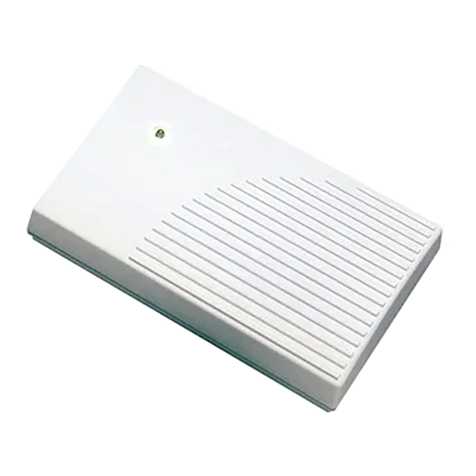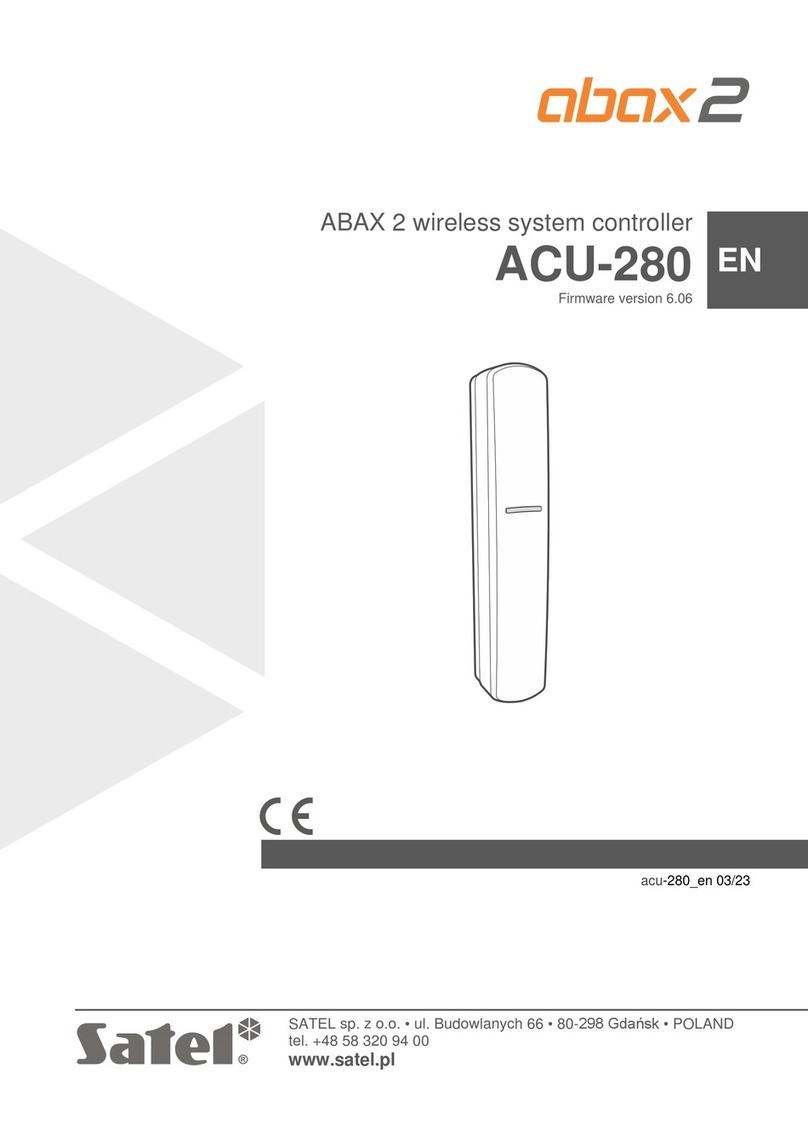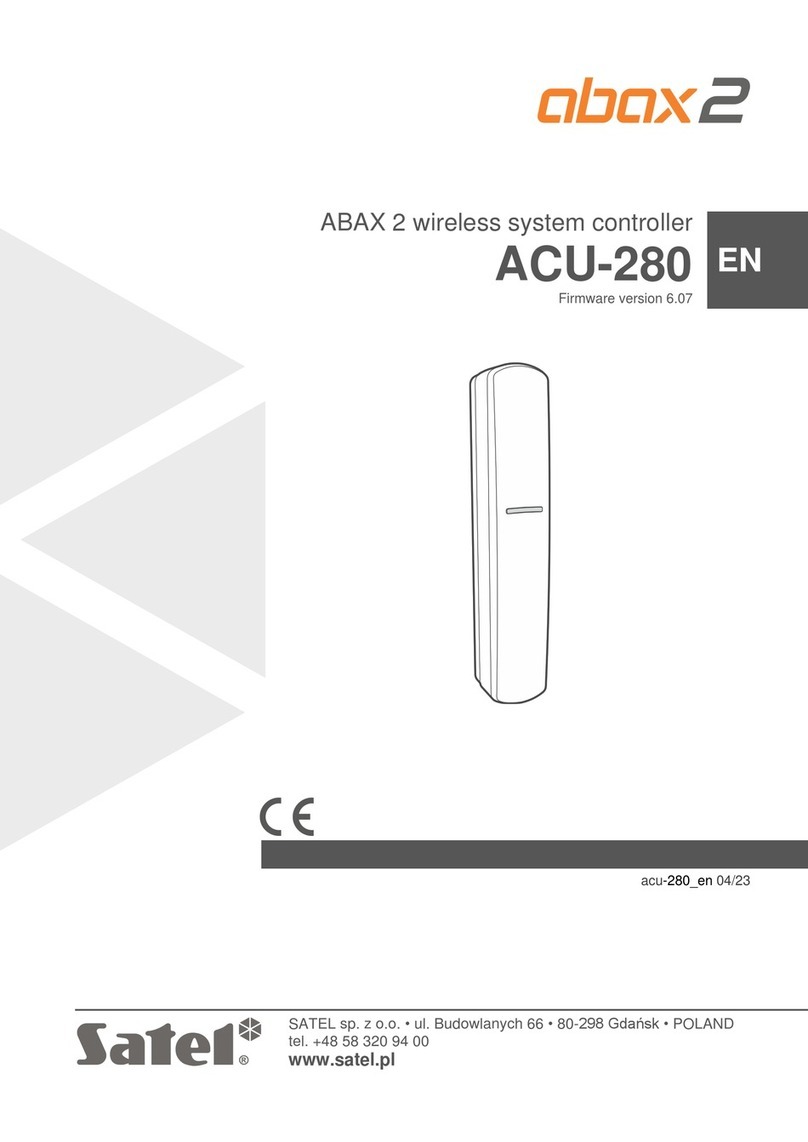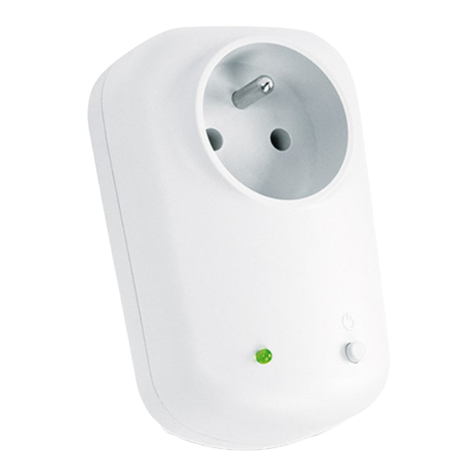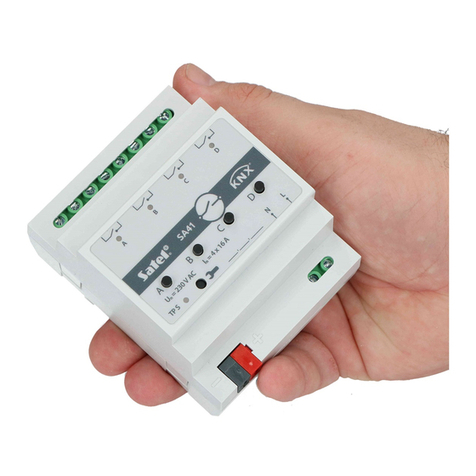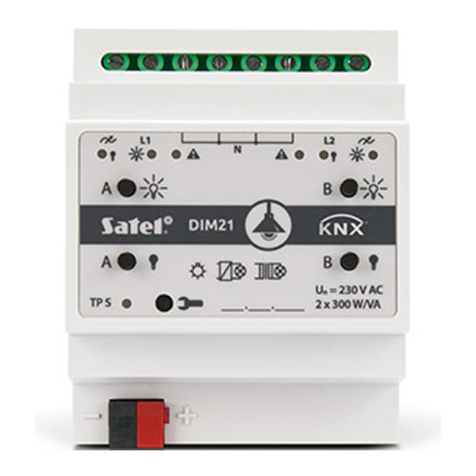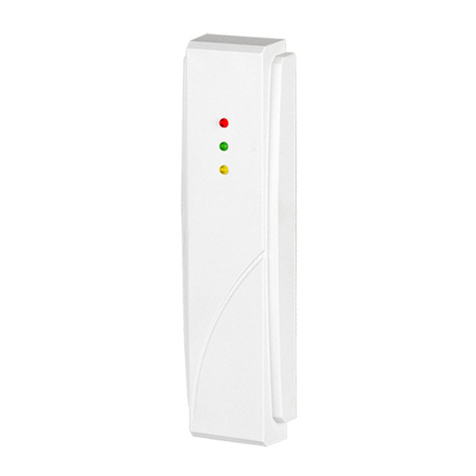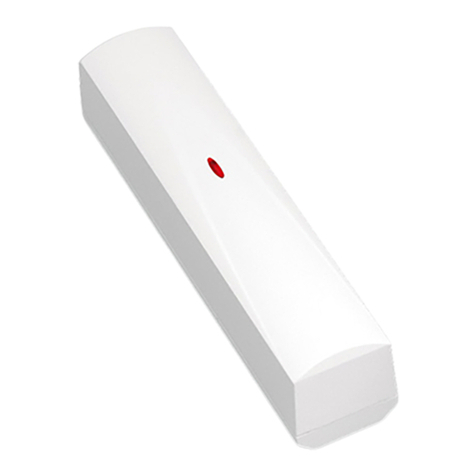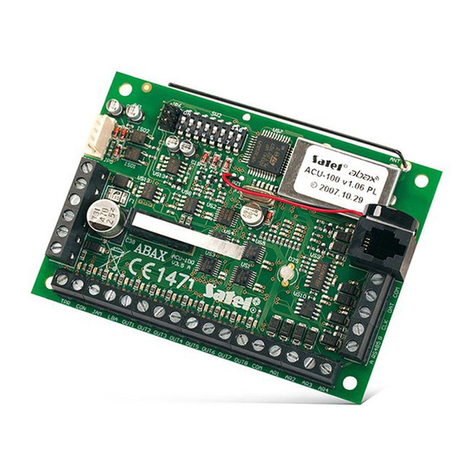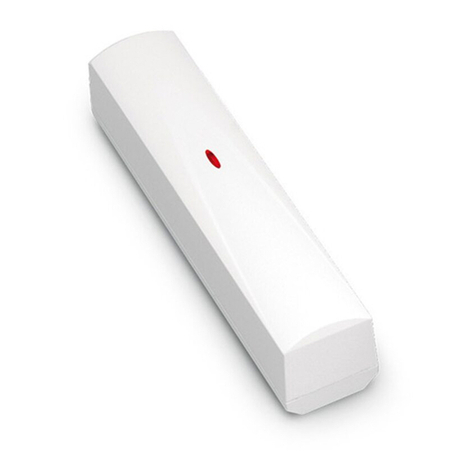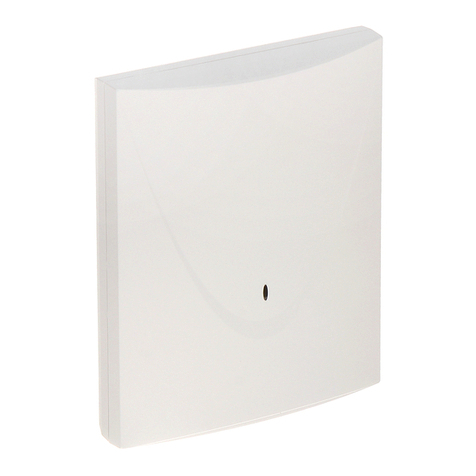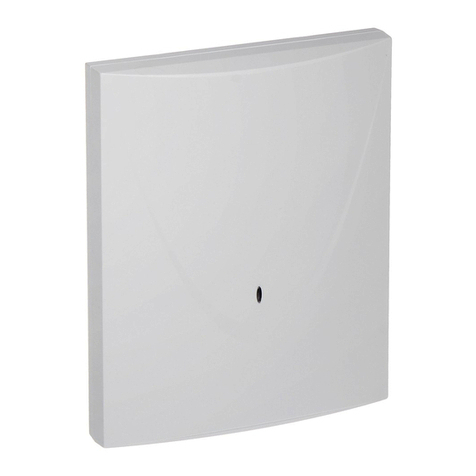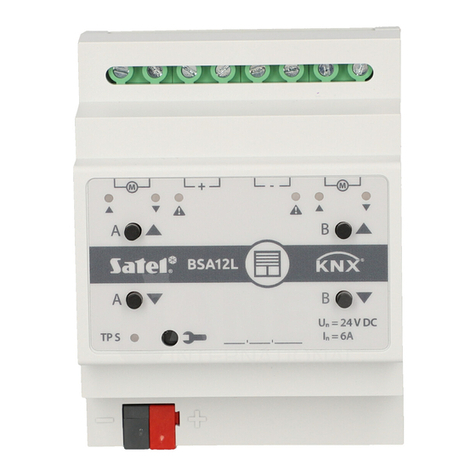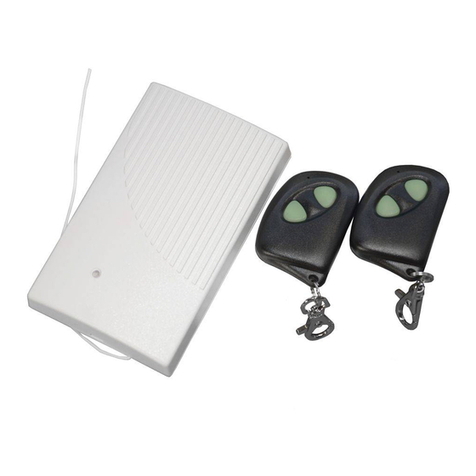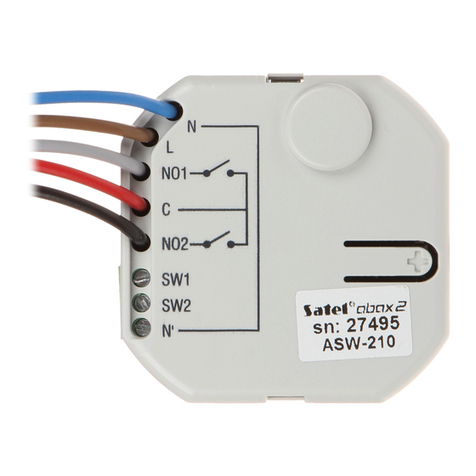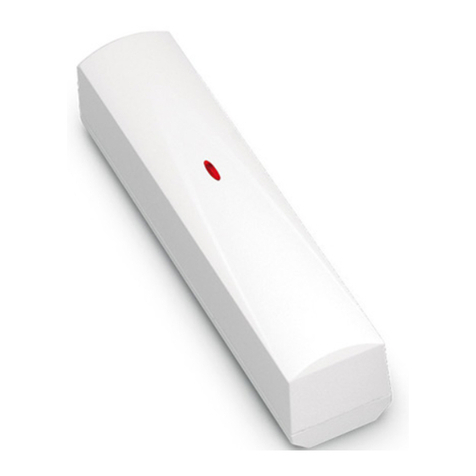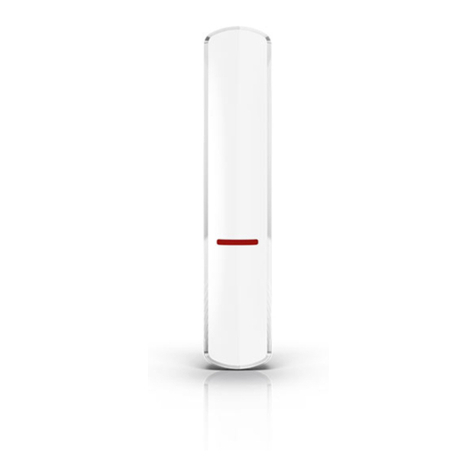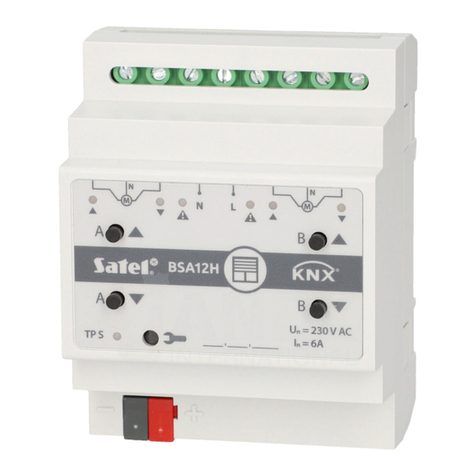
- 2 -
COM – ground
C– common terminal of relay
NC – normally-closed terminal of relay
NO – normally-open terminal of relay
TMP – anti-tampering contact terminals
The D1 (two-color) LED is the module operation indicator, which helps in programming the controller
parameters. In normal condition, the color of its light is green, changing into red when a signal is
received by the controller from the transmitter (remote control). The blinking red light means that the
remote control battery is low.
The LV output becomes active when remote control low battery condition is found by the controller, and
remains on until a remote control with good battery is used. It can serve e.g. to report security system
troubles.
The PROGRAM button is intended for programming the remote controls to work together with the
controller, and for programming the monostable switching time of the relay.
The three pins (ABC) situated at the PROGRAM button are used for setting the relay operation mode.
PROGRAMMING OF REMOTE CONTROLS
The controller only serves the remote controls if entered into its memory by the following procedure:
1. Press the PROGRAM button – the LED will start blinking in green.
2. Press the remote control button – the LED will change its color into (blinking) red.
3. Press again the same remote control button – the LED will light in steady green color – the remote
control has been entered into the memory.
If the memory is already full or if the remote control is incorrect (made by another manufacturer), the first
depression of the remote control button will make the controller return to its normal condition.
The one-channel controller is operated by each of the remote control buttons.
Clearing the remote control from the controller memory is only possible by erasing the whole
memory contents. In order to do so, press and hold down the PROGRAM button for about
3 seconds (the LED will blink in red), release the button for about 1 second, then press it again
and hold down for 3 seconds. The LED will start blinking in red and then, when the memory is
cleared, it will return to the green color. The controller is now ready for programming the remote
controls.
IMPORTANT:
- When closing the housing, be particularly careful so as not to depress the programming buttons with
cables .
- The lifetime of remote control batteries depends on how often they are in use. The batteries must be
periodically checked (e.g. by noting how the D1 LED lights when the controller button is depressed,
or by using the controller LV output) and replaced with new ones.
SETTING THE RELAY OPERATING MODE
The relay can work in one of the three modes (selected by means of jumpers and ABC pins):
1. Bistable (all pins open) – each depression of the remote control button changes the relay status to
the opposite one.
2. Monostable (pins A and B closed) – the relay is activated for a determined time.
3. Pulse (pins B and C closed) – the relay is active as long as the remote control button is depressed.
The time of monostable switchover is set in the following way (by default and after clearing the remote
controls, the time is set to 5 seconds and can be changed within the range from 1 to 255 seconds):
- Press the PROGRAM button twice – the LED will go out.
- Press the remote control button – the LED will start blinking alternately in green and red.
- Measure the programmed time and press again the remote control button – the LED will light in
steady green color.
